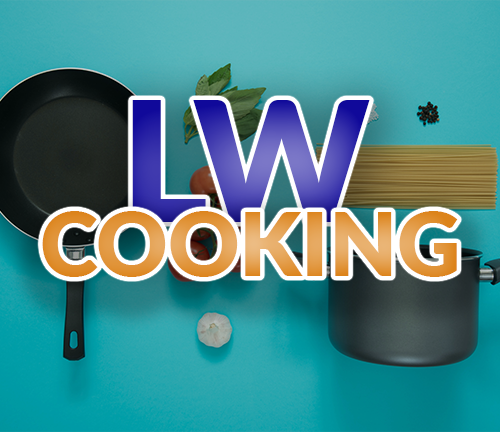What are the best practices you’ve learned to save time or make a meal better.
Ok I might get downvoted to oblivion but I use MSG. It enhances the flavors so much that I have stopped going to restaurants.
Edit- I did my research and found no credible source that says MSG is harmful.
Edit2- If you go to a restaurant or order KFC chances are they use MSG as well
Anti-MSG propaganda actually comes from Asian racism, and was born out of the idea that Chinese food with its MSG was causing headaches and other health effects that were entirely made up. MSG is perfectly fine for you, and it makes a ton of things even tastier. I use it all the time in home cooking.
- Nothing goes on a plate without being tasted
- If it’s too sour, add sugar
- if it’s sweet and you haven’t added acid, add a splash of vinegar.
- if it’s too hot, add fat
- if you burn it, throw it out.
- IF you taste it early, it should taste weak. If it’s fantastic when when it starts to simmer, it’ll be too harsh once it’s reduced.
- Taste it and it tastes empty or boring? Smell it. Smell all your herbs/spices on hand, which ever one it smells the closest to, add a healthy pinch and salt if it doesn’t taste salty already.
- know your oils and use the right ones. Olive oil can handle some heat and is great for savory, grapeseed is almost flavorless. Canola has a distinct flavor that doesn’t go with everything.
- season your meat before you cook it.
Don’t be afraid of spices. Use more than you think is necessary. Onion and garlic can make a meal 100x better.
Biggest hack? Realizing that humans have been cooking for millennia, and that it’s in the best interest of big business to convince you that it’s difficult/expensive/extremely complicated.
You don’t NEED the fancy equipment every company out there is trying to sell you.
Not everything needs to be gorgeous on the plate, or a whole production to make.
The poorest people in the world cook delicious food every day.
For instance, you don’t need NEED a +$150 Japanese chef knife to cook at home. What you need is something that can hold an edge through general maintenance, a whet stone, a kitchen towel to dry off your blade immediately after you hand wash it, and a little bit of patience.
IKEA sells some surprisingly great single construction (steel blade, steel handle) knives, and their single body chef knife is like $25. Just get an honing rod for use before you start slicing, and a whet stone for periodic sharpening (there’s TONS of YouTube videos of all the different ways of sharpening your knife), and remember to wash and hand-dry after you’re finished. My chef knife cost me barely anything, and I’ve used it for years and years, and it still slices through a tomato without a problem. Also, I only cook for myself, so I can absolutely 100% guarantee my whet stone will “outlive” me.
Mandolines are not you friend. They thirst for blood.
Seriously if you get one get a safety mandoline like the once for all brand.
Bake bacon on cookie sheets at 375 for about 20 minutes. You can make a ton of bacon very quickly, with almost no mess, and all the bacon is perfectly flat. We have a double oven and we can make about 4 pounds of bacon in about 30 minutes this way. :)
Does this not splatter all throughout the oven?
No, it does not splatter throughout the oven.
Adding Knorr brand Caldo de Tomate to your rice cooker turns your plain old rice into Spanish rice. Blew my mind when I tried it.
By far my favorite is to have a squirt bottle of water next to my stove. It’s great to have throughout the cooking process, especially if you’ve moved on from Teflon bullshit and are using a pan you pre-heat. To start, you put the pan on the heat and squirt a little water in it. When the water evaporates, the pan is usually in the 350F-400F range. Then when the pan is dry and heated a little more, you can squirt a few more drops in to see if the Leidenfrost effect has taken, uhhh, effect. The way you tell is that the water just dances around on the pan instead of behaving like water normally does, and it’s how you know your food won’t stick, it is at this point that you add the oil.
Moving on to the actual cooking, let’s say you’ve thrown some chicken thighs in the pan and you’ve built up a lot of fond (the brown bits that form in the bottom of the pan) and the chicken is almost done, but you’re not planning on making a sauce. Deglaze the pan with little squirts of water targeted directly at the fond and rub the chicken thighs over the area where the water is deglazing and suddenly that fond is sticking to your chicken thighs, resulting in a better crust and a cleaner pan.
Speaking of cleaner pan, once you’re done cooking and plating and you have a hot dirty pan, squirt enough water in to cover the bottom of the pan and then go eat. When you come back to the kitchen to clean up, the water will have broken down the shit on the bottom of the pan and will steam the sides of the pan, so the pan will wipe clean as easy if all you did was fry an egg.
Finally, I stopped putting milk (of any variety) in my coffee, but I wanna be able to drink my coffee right away and it’s too hot when it’s made fresh, but I’ve got a bottle full of room temperature water (all the filtered water in my house comes out ice cold) sitting right there so I can cool it down that way (I brew my coffee pretty strong so watering it down isn’t a big deal).
Butter makes everything better
This is why restaurant food tastes so good. Fat is flavor. But beware, restaurants don’t give a shit about your cholesterol. They want you to have good food that you want to come back for. They’ll give you butter and grease all day long. You can cook tasty food at home that won’t clog your heart, but it takes a lot to meet the flavor standards of bacon or butter using poultry or vegetable oil. The trick is moderation. Not every meal needs to be a greasy bacon cheeseburger, but you don’t have to completely boycott that either.
Mine is to salt or season from up high.
Clean as you go, don’t just leave it all for the end. Onions are sauteing and you’re done chopping everything? Good, wash your cutting board and knife and clean up any messes before the next step. Sausage is done browning and you’re dumping it in with the onions for a minute with the garlic and some herbs? Great, wash that pan and spoon and set it down to dry and wipe up all the oil splashes.
Just makes clean up so much easier after you’ve eaten and you’re much more efficiently using your time.
Add salt as you cook, not all at the end.
Always salt your pasta water to the equivalent of sea water salty. It’ll make your pasta taste much better.
The common saying is “as salty as the sea” but that’s actually a lot more salt than you would think. 2-3 teaspoons of salt for a large pot of water is plenty. If your water was actually as salty as the sea, your pasta would taste awful
-
when dicing onions cut radially first, then slice across, it saves you that weird half slice that’s traditionally used for dicing onions.
-
I use cast iron for nearly everything, it survives a hundred years because it’s bulletproof not because it’s gingerly handled every time it’s removed from it’s velvet case. People dragged them around on Chuck wagons, you will not kill it with soap. Worst case it gets a little sticky and now you need to cook some bacon in it.
-
A splash of acid in your soup or stew at the end really wakes it up.
-
Never cook rice without at least a couple bay leaves. Ideally you’ll cook it in chicken stock as well, add flavour where you can.
-
The best chicken stock in a jar is Better Than Bullion. Hands down. No contest.
-
With a splash of oil you can cook eggs even in a sticky cast iron pan.
-
Always use hand protection of some kind with a mandolin. I’ve never seen a non-pro chef go without and not fuck up their hand. Even pros lose the tips of their fingers sometimes too.
-
If you want to recreate movie theater popcorn at home you need the following things:
A whirlypop or other stovetop cooker
Coconut oil, refined
Popcorn kernels, quality varies, find a good brand
Fine salt
“Popcorn oil” - this is butter flavored oil sold next to the kernels
Here’s what you do, set up a bowl to dump your popcorn in, throw some salt in the whirlypop with a spoon of coconut oil, and just a tiny glug of the popcorn oil, not much just a tad. Add your kernels, crank the heat to high and start cranking. Do. Not. Stop. The popcorn will begin to pop after an interminable wait. Keep cranking until it either gets hard to crank or the popping slows down significantly. Then quickly dump your popcorn into the waiting bowl. Do not add salt, you already did this, the fine salt will be well distributed this way. Add a bit of popcorn oil. Shake the bowl a bit to distribute, add more if desired etc. Then enjoy your movie theater popcorn.
It took me years to work out how to do it without the Naks oil, which I bought from a local popcorn shop for awhile.
A splash of acid in your soup or stew at the end really wakes it up.
What kind of acid are we talking about here, the weak stuff or the stuff that melts through your pot
/s
The kind that lets you see funny colors
That would definitely wake a soup up
-
Instead of using a pastry cutter to incorporate butter, freeze the butter then grate it with a box grater then mix it in. It stays much colder. Perfect for pastry or biscuits.












